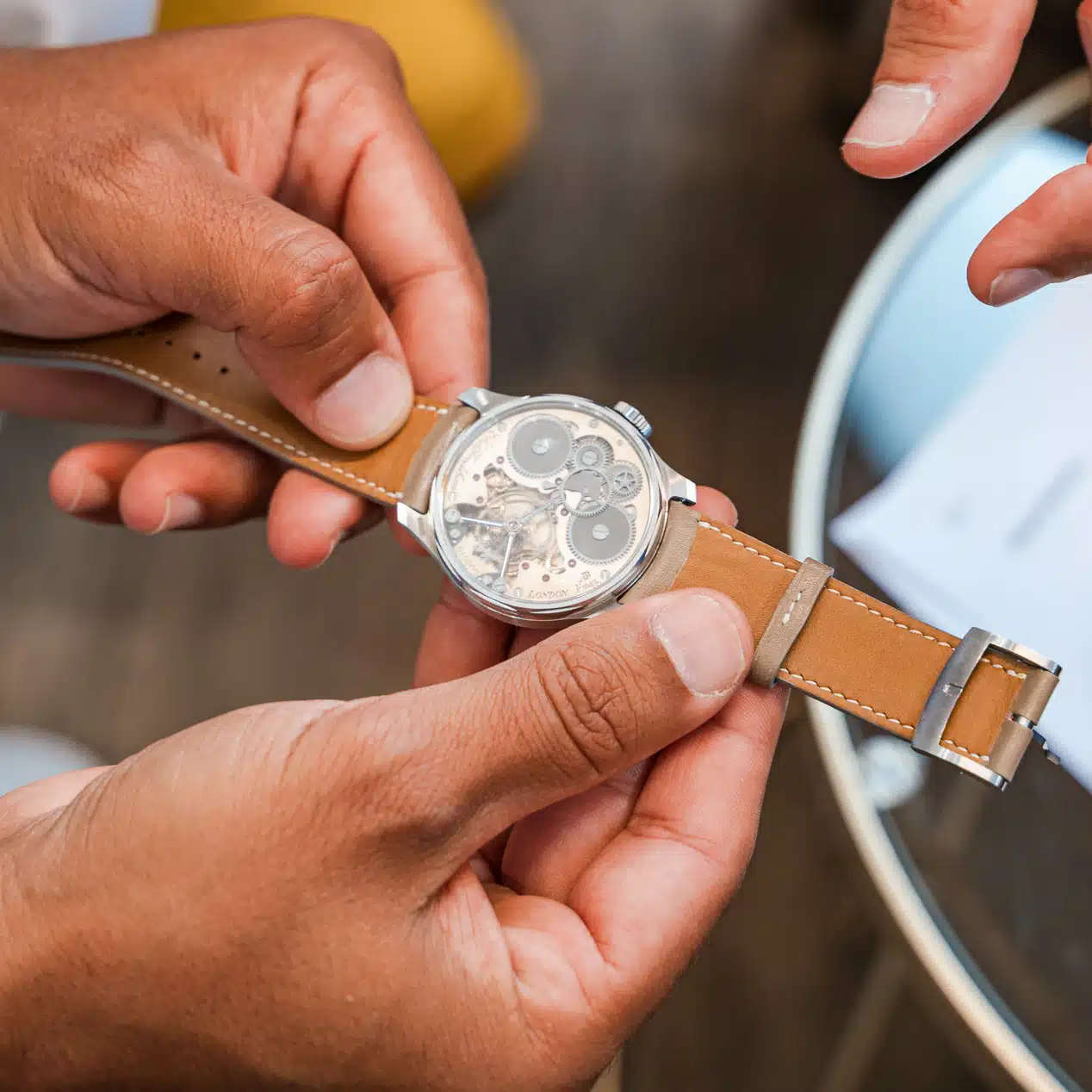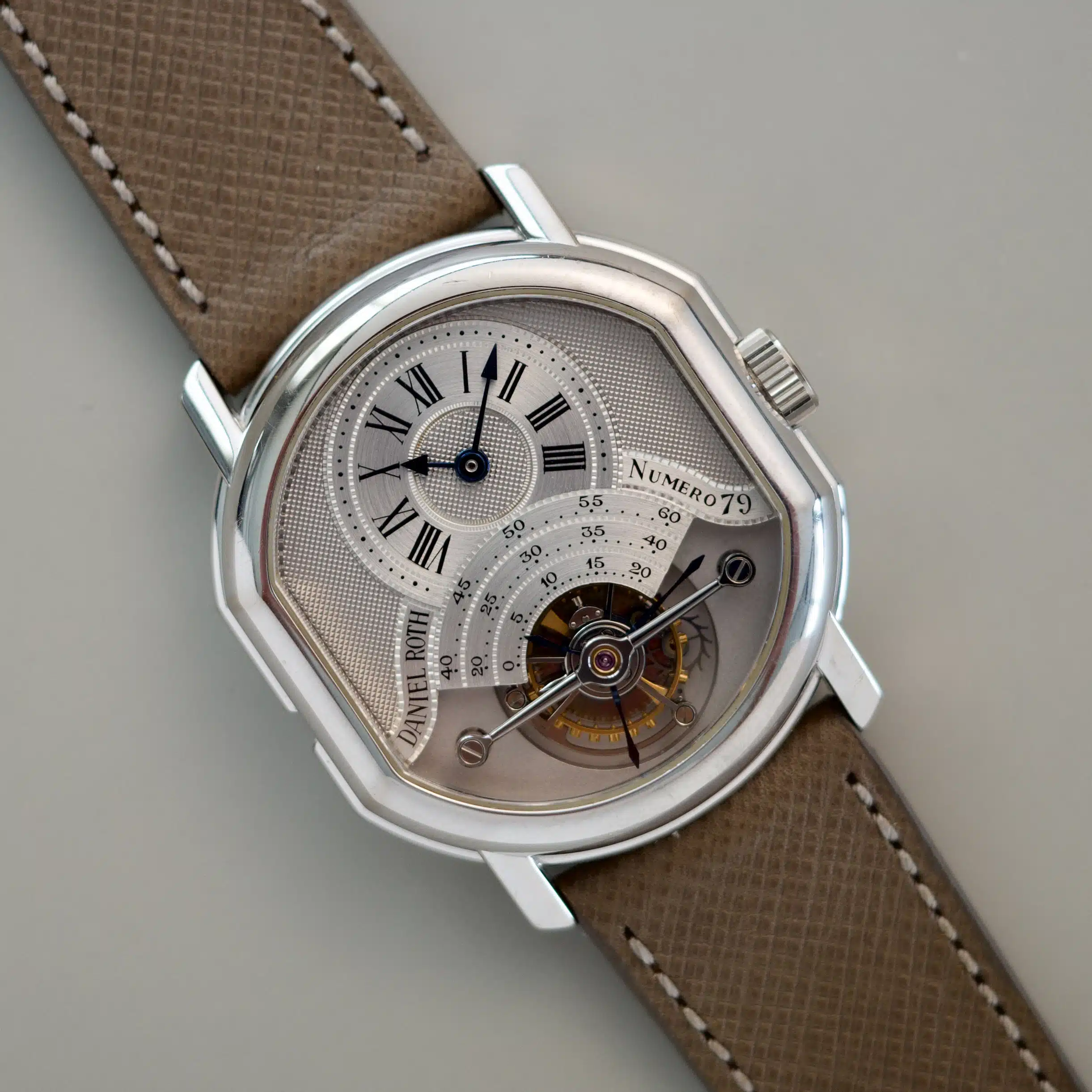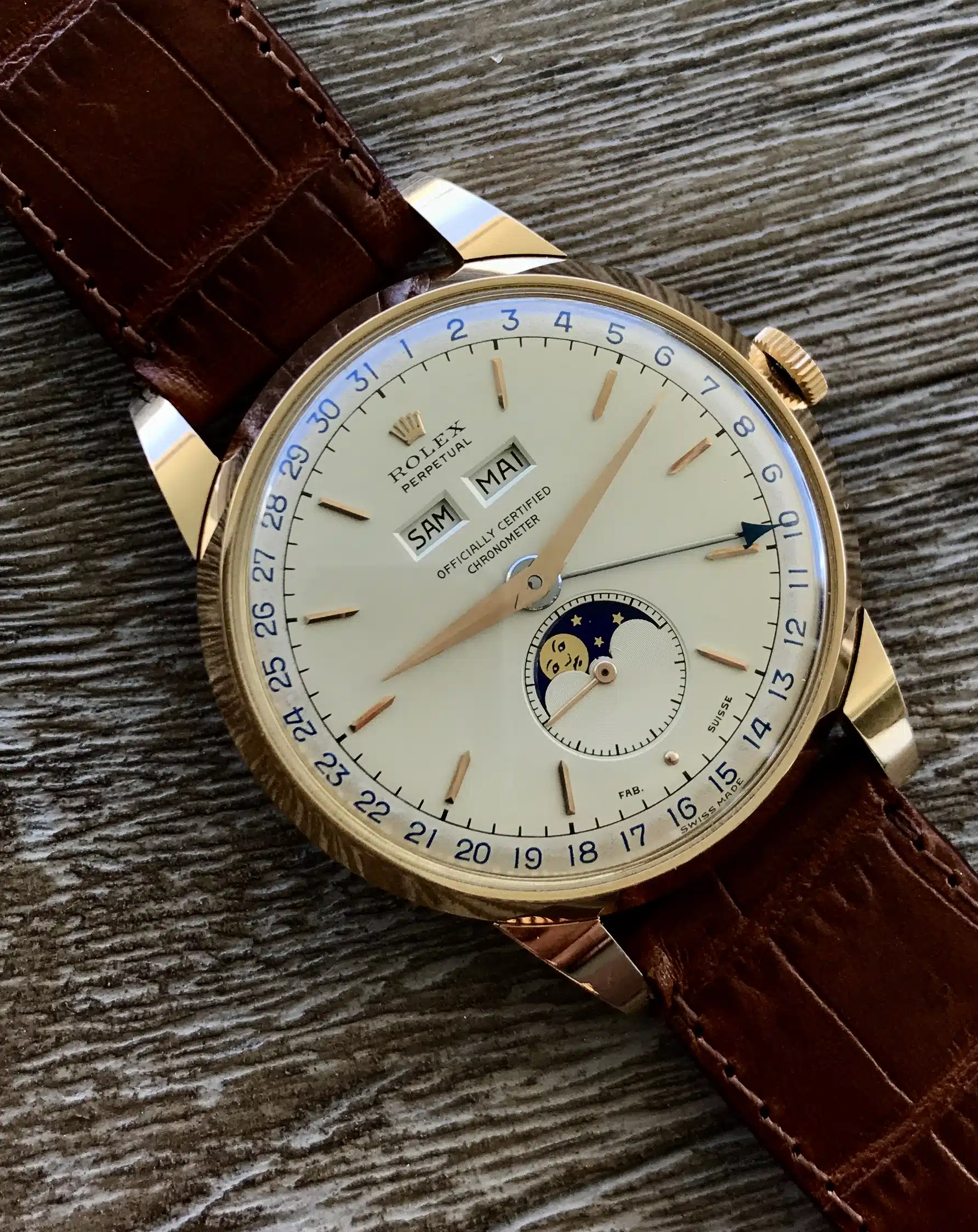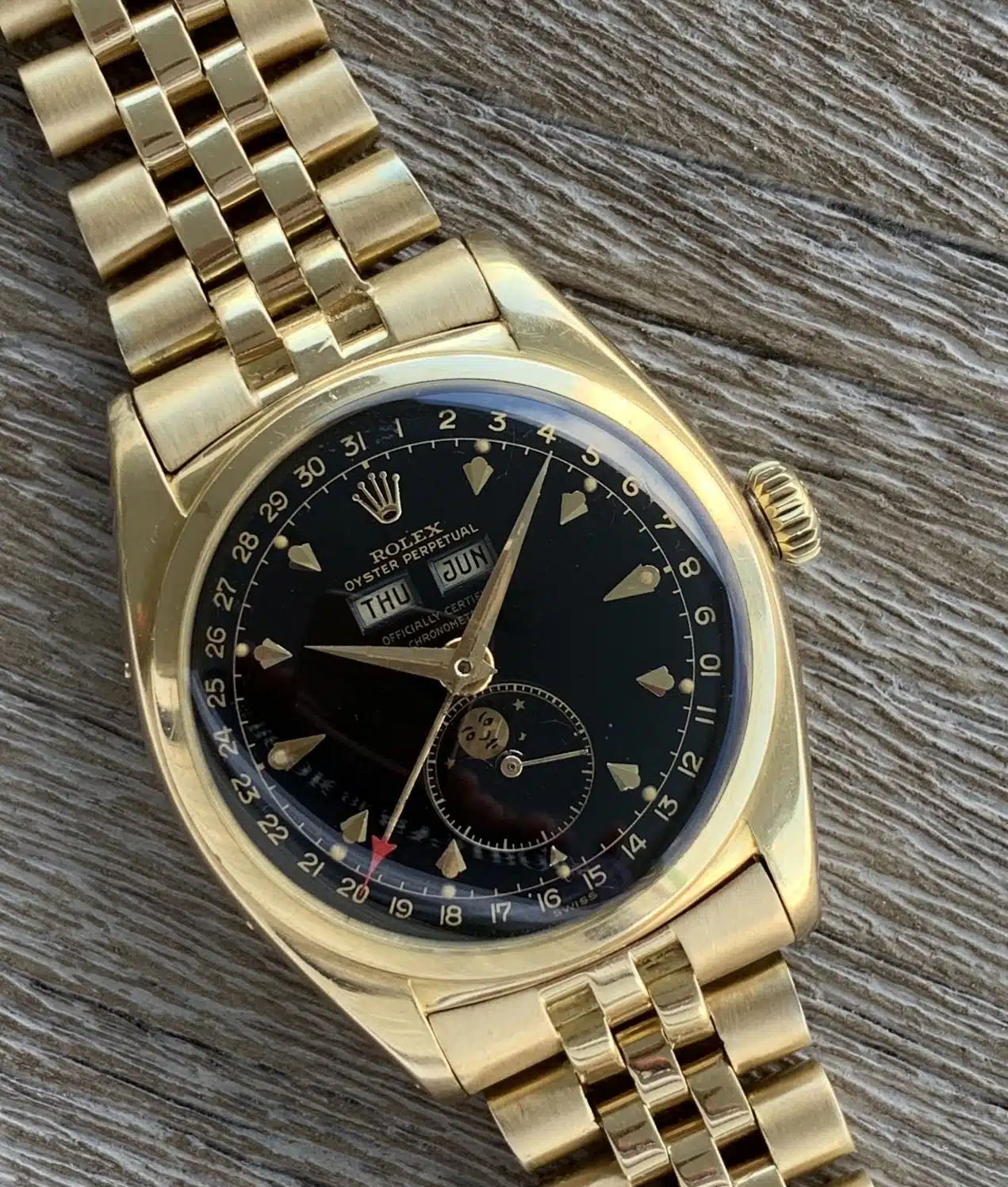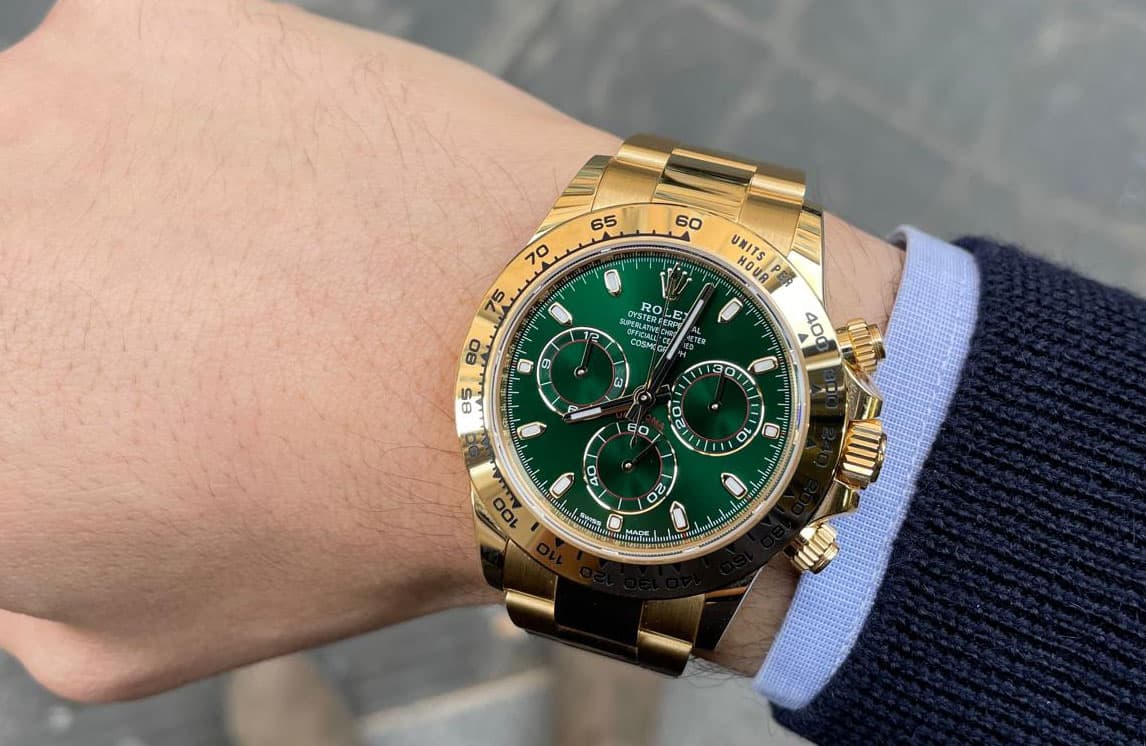We continue our interview with Alfredo Paramico (part 1 here) that we had interrupted while we were arguing about independent watchmaking.
We have said that traditional and vintage watchmaking are two "sectors" that travel in parallel without competing with each other. However, it is undeniable that some modern manufacturers are, so to speak, "pulling the jacket" on independents. We are seeing more and more collaborations with them, as well as some models of "historic" brands now appearing with unconventional graphics and colors. All this, often, with the endorsement and support of some auction houses.
"I address first the discourse of the "pressing" interest of auction houses in some independents: in my opinion these are market logics that should not exist and I would put these behaviors on the same level as speculation. As for the talk that historical brands, for the past few years, have been trying to "imitate," at least stylistically, the creativity proper to independent watchmakers, I believe that in theory we have seen something, but always from a purely aesthetic point of view. The reality is that you absolutely cannot say that the more traditional brands in the last 40 years have innovated. Case materials are always the same, despite the fact that technology allows us to do things that are really out of the ordinary. The layouts of the dials are always the same, the same goes for the shape of the cases..."
Is no one saved?
"One of the few who has really innovated is Richard Mille, with the choice of materials, mechanics and with that of the case."
In contrast, it is not easy for historical brands.
"Absolutely not, I give an example. Patek Philippe carries with it history, tradition, values of quality and perfection. To innovate would be to a certain extent to 'disown' all this-a 'very' difficult choice. I would not want to be in Stern's shoes, because between innovating and reneging the line is very blurred. It becomes dangerous. But above all, the bearers of history and tradition, like just Patek Philippe, but also us old-fashioned collectors, if we don't try to understand the future, if we don't try to think as the new generations think, we risk clinging to our territory ... and that's not good."
An example?
"A few years ago I was lucky enough to attend a symposium with Jean-Claude Biver, an absolute watchmaking genius. He said, 'Every night I try to think about what we can offer the next generation.' The best ideas came to me when he went to Japan with my son Pierre. I liked to see what stores he would go into, what he would choose, what he would observe, what he would comment on with his friends. The reality is that only if we can understand the new generations can we transfer into the present and the future the enormous cultural value that comes to us from the past." At that time I believe he had an apex role in TAG Heuer and was and President of the LVMH Watch Division, a young and youthful brand. Not surprisingly, he contacted-and this is about 2017-two very young people to do communications: the first was a Colombian singer, songwriter, rapper, and record producer, J Balvin. Biver's words are still emblematic today, "We have to start with the Millennials. Even if they can't buy now, sooner or later they will buy. If you don't talk to them now, how can they dream of you later?""
We are curious: the second one?
"A guy who went faster than anyone in karts, but was most famous for the inevitable fights and fisticuffs at the end of the race. His name was Max Emilian Verstappen and he is today, with three world championships won in a row, one of the greatest drivers in Formula 1."
Don't you think young people should choose their own way?
"Yes, but they need guidance."
Can the web be the best solution to reach them?
"I am fortunate enough to use social media without any problems, and in recent years I have come into contact more than once with 25/35 year olds, mostly in Southeast Asia: Singapore, Malaysia, Taiwan, Viet Nam. In almost all times our "relationship" starts because I receive a message from them on Instagram."
What do they tell you?
"It always starts with a 'Mr. Paramico,' and here I'm already a little pissed off because I feel old, which I'm not. "Thank you! You have been an inspiration to us, because of what you have collected, what you have bought, your style of doing things." I try to make these guys understand, that all I can do for them is to "light a beacon" on a world I know very well, that of fine watchmaking between the 1930s and the 1960s. It is, however, something circumscribed. The real source of inspiration is them for me, because only they can project me into a limitless world that has only one name: future."
Generations need to talk to each other.
"Which is what I do all the time with these guys, and the exchange of ideas is something really beautiful and powerful."
Are there any Europeans as well?
"Yes, a few Americans and a few Europeans, even two or three Italians. All very interesting people indeed."
You are fortunate to start from a really very high level.
"I can do this because I got into this world really many years ago, with different rules and numbers than we have today. If I look back, I find that today I could not even remotely afford the purchases I made a few decades ago. The values are completely different. Today we talk about exponential factors."
Your past is your strength.
"I was fortunate to grow up in an environment where the clocks were there, you could touch them, there was above all a great deal of fellowship among all the people who were in charge of them."
What does a watch convey to you?
"A combination of sensations: the beauty, the rarity, its condition. It basically speaks to me and tells me everything about itself. However, I really like to think about the criteria the new generations follow when choosing and buying watches: they rely so much on the stories of watchmakers reborn in the 1990s after the collapse in the previous two decades due to quartz. I like this so much."
You talk to me about storytelling and meanwhile the world, at least until very recently, in the hands seems to have looked more for a reason to speculate than anything else.
"In any investment there is inevitably an eye that also looks at the financial aspect, and it is also right that it should be so. When I was first starting to buy important pieces, having to 'pay a premium' because a particular watch had characteristics outside the norm was a manageable thing, because the values were compatible with the life of the time. Today, people who buy above-average pieces, perhaps paying between $3 million and $5 million, know exactly what they are buying but are right to be careful about safeguarding their assets."
The speculation, however, has been there.
"Yes, there is no point in denying it. But it was caused by factors exogenous and not endogenous to the clockwork. Covid turned everything upside down, putting an injection of liquidity into the markets that was unparalleled in history. It bothers me so much today to hear "the watch market has collapsed." That is not true at all. The reality is that some models that had reached crazy prices during the pandemic are seeing their prices halved today. But in general, all of today's prices are always higher than pre-pandemic prices."
A fair point, because the watch market has increased in value anyway.
"In statistics we say that unexpected events, wars, pandemics, natural disasters, should not be considered for studies of averages, but go into the tails of the probability curve. Extrapolating out the exceptions, the price spike during the pandemic, we can see that the clocks have been rising steadily over time."
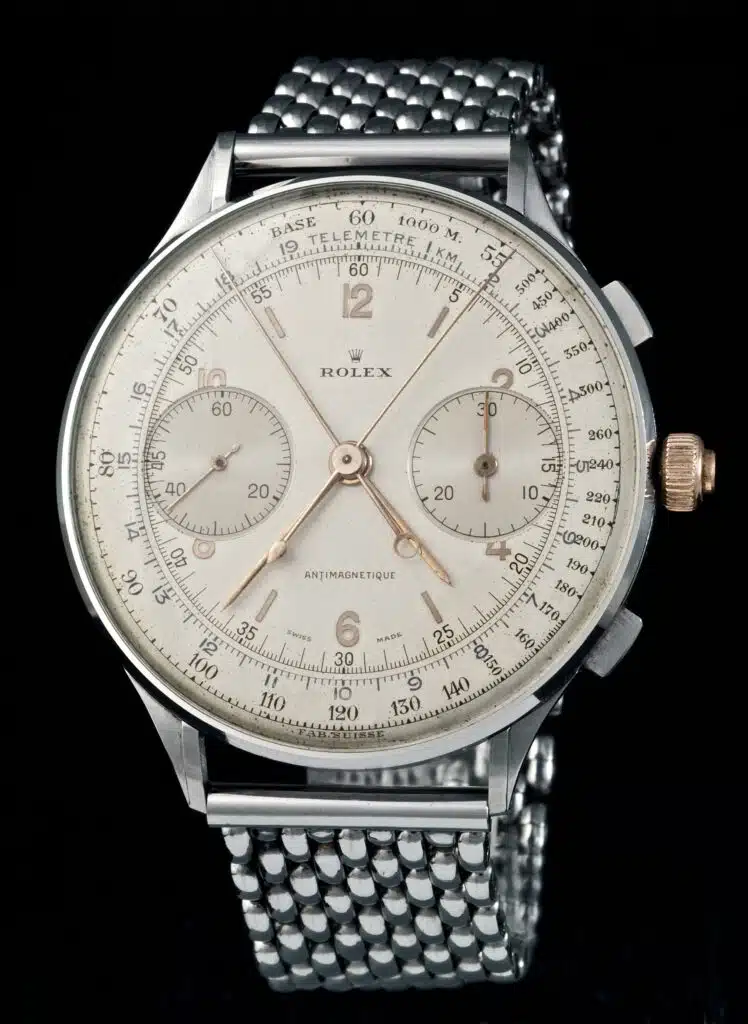
The most rocambolic story you can remember in buying a watch? (John Bonanno asks.)
"Look John, I can relate two of them. The first is related to feelings that I have rarely experienced-and I'm not ashamed to say it-even in normal human relationships. It was when I purchased the 1518 in steel. It was a negotiation that went on for months, subject to the result of a minor auction that had taken place only the day before I closed the deal. I remember it was late in the evening of a beautiful May day, I was standing on the lakefront in Geneva in front of what is now the Four Seasons Hotel des Bergues. I still have in my mind the moment when I received the fateful news, and what I felt was something really strong."
That watch later made 11 million Swiss francs at auction at Phillips.
"That's right. That's the one."
The second question is about the piece you have never been able to purchase: is there a watch you have longed for but have never been able to own?
"I never managed to buy the "limoncino," or rather I lost it three times in a row always for 5,000 euros ... then I got one, but later. Otherwise, there was never a watch that I wished for and failed to buy."
The purchase you are most proud of?
"Definitely the Patek Philippe ref. 2497 in platinum. An extraordinary watch, which should not be locked in a private collection, but would undoubtedly deserve the case of a museum. Incidentally, even in that case, I arrived at the purchase after a whirlwind story."
If you can, tell us about it.
"It would take Aurel Bacs to get the full story. What I remember is that at that time there were not such effective social media, and Aurel received a phone call from a person who was even on another continent, telling him that he owned a very nice watch. At that time, however, we used to have fun among friends calling him as a joke, making the odd rumor and proposing the strangest and most expensive pieces. So he thought it was yet another joke and treated it as such. It took some time to convince him, but especially the arrival of the photo showing this beautiful piece, with the case practically new, with the Breguet markers in beautiful enamel. In the warranty, on the last page, was the dealer's stamp and the date of sale, which matched the date on the archive extract requested later."
You always name this 2497, it really impressed you.
"Yes, it is something that has stayed with me. As much as I loved and respected it, I "never" managed to wear it. It was in a safe deposit box, I held it in my hand many times, studied it in every detail, but I never managed to wear it on my wrist. I liked to see it, to know it existed-a form of respect perhaps too much."
Nautilus or Royal Oak.
"Royal Oak all my life, those who know me know that I don't like Nautilus, even though I've owned the most beautiful of them all, but I still don't like it."
Daytona or Speedmaster?
"Daytona."
What do you think about Swatch reissuing first the MoonSwatch and then the Blancpain sub?
"These are fun initiatives: I have the first one, I will buy the second one. I think they are commercial operations that have the merit of bringing younger people closer to the world and history of watchmaking. I don't see anything wrong with that, in fact I'm completely in favor of it. Good for everyone."
Rolex acquiring Bucherer?
"I think it is also right. It is a further verticalization of the watch industry, which should be looked at in a positive way. Also, the second-wrist market is increasingly important, and Rolex has no intention of losing this market share."
Who will buy Patek Philippe?
"I don't know and can't know. There is a lot of talk about LVMH, but their business and production strategy would hardly be compatible with something like Patek Philippe."
LVMH is moving into the world of Haute Horlogerie in force.
"They made a big investment with La Fabrique du Temps, taking two mega watchmakers-Erico Barbasini and Michel Navas, who have worked wonderfully with both Daniel Roth and Gerald Genta. Their timepieces will compete fiercely at the very high end of watchmaking-how would they fit in with the Geneva House? Coming from the world of finance, I am ready to accept anything, but it would be really difficult for such an acquisition. I don't see it as an operation on the table."
What do you look at when you buy a watch?
"The beauty! It has to be beautiful. I remember Auro Montanari used to say, 'the important thing for watches is that they are beautiful,' is his mantra."
He also told us in his interview.
"Auro is an aesthete in everything he does, from watches, to cars, to clothing... I will never be able to imitate him but I agree with him: the watch must give you positive feelings. In this regard, just after reading your interview, I would like to disagree with one of his statements."
We are listening to you!
"Auro said that in his opinion independents have not yet been able to offer an aesthetic canon to match the mechanical quality of their watches. I would have some doubts about that. Auro was born and raised studying watches with a magnifying glass, his culture is so rooted in the aesthetic canons of the 1940s and 1950s, that it must not be easy for him to fully appreciate the aesthetic canon of an independent. I say this with affection and not as a criticism. The very people like Auro, who have a cultural background to pass on, are the ones who should make an extra effort to try to understand 'why that watchmaker wanted that aesthetic canon on his creation, how he got there, what he wanted to tell.'"
Times are changing.
"Times change, and with them, aesthetic standards change. If I saw an independent today making a watch with a spectacular movement, yet taking the case and dial from 1950s modeling, I would find it disconcertingly banal. You have to innovate; it is right to do so. Besides, all stylistic changes need time to be "digested," especially by those with a really high sense of aesthetics."
One last question. In the world of collecting, the most important pieces are recognized as if they had a first and last name: you know their history, their vicissitudes, their value. What happens when, perhaps quite randomly, at the airport or during a watchmaking moment, you see a "known" piece on someone's wrist?
"It's something that happened to me a lot when I went to auctions. I've also seen some of my watches again in the cases of important museums, and it's always a good feeling. In my life I have never had regrets. I worked hard to get certain pieces, enjoyed them, and then made other choices. Nothing is forever and I don't believe in those who say, "I will never sell it." They make me a little sad, because they often want to assert their power and therefore the non-need to sell. But that is not the point. The finest watches, as is the case with any creation of the highest caliber, must be passed on. More and more people must have the opportunity to be able to touch them, admire them, wear them. It's part of life, indeed, the beautiful part of life."
INTERVIEW BY PAOLO GOBBI

